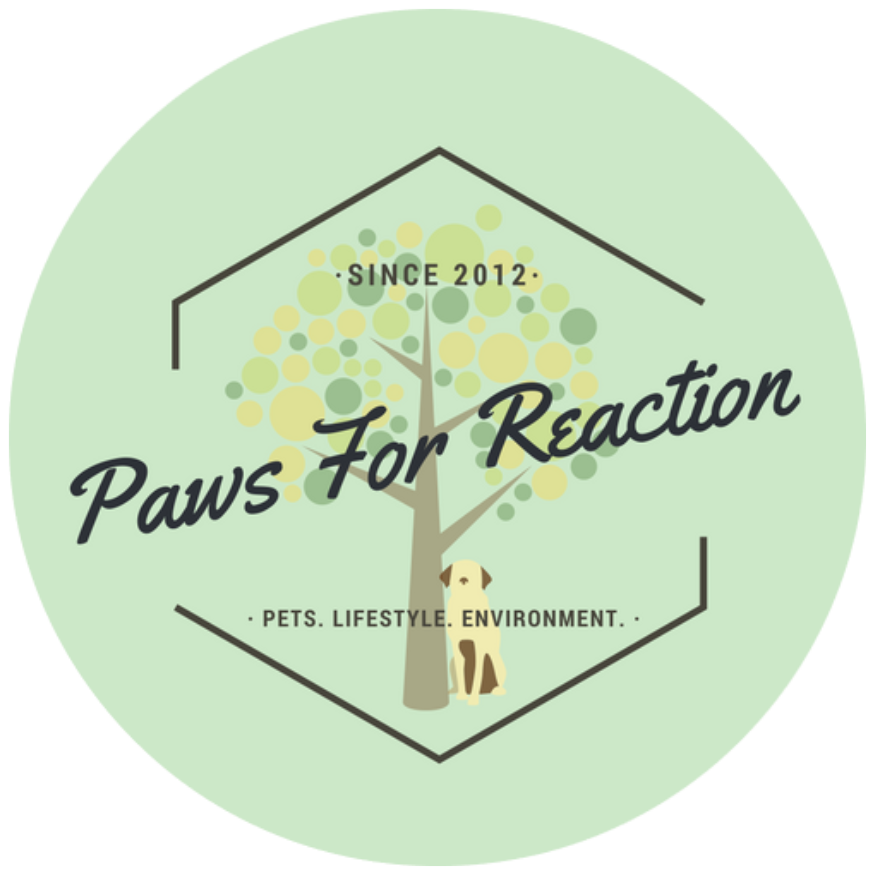Scratching the surface: Does my dog have a food allergy? What do I do?
It's always been my worst fear: my dog develops allergies. Allergies may seem like no big deal but for many dogs, allergies are difficult to manage. But what about food allergies? There is a lot of misinformation about food allergies in dogs. I'm going to help you scratch the surface and uncover the truth about pet food allergies. Let's get started!
How will I know if my dog has a food allergy?
Truth is you may never officially diagnose a specific food allergy, but with some trial and error, you may be able to manage your dog's adverse reactions using restricted diets. It can be difficult to narrow down what exactly a dog is allergic to. A food allergy is a reaction to food that involves the body’s immune system. It almost always a protein particle in the food that is responsible for reactions. Most dogs react with itchiness and skin concerns. Your dog may itch, lick, and chew paws, flank, groin, neck, and ears. If the itching happens during every season, it may be a food allergy because a lot of seasonal allergies only present themselves during certain months of the year.

A small percentage of dogs with food allergies may get recurring ear infections and some have gastrointestinal signs such as chronic vomiting, diarrhea, and frequent bowel movements. Food allergy dogs often have both varying degrees of skin signs and gastrointestinal problems that persist. It's important to consult our veterinarian if you suspect allergies. Your vet might recommend a diet trial or an elimination diet.
How is a new diet selected for a diet trial?
If a food allergy is suspected, your veterinarian will want a thorough history of what foods and treats your pet has eaten. This includes table scraps and chew toys with food flavorings. Once they have this information to chew on, an appropriate diet can be selected for the diet trial.
The diet selected will contain a “novel” protein and carbohydrate source, meaning that your dog has not eaten this protein source in the past. Your veterinarian may recommend a food allergy trial based on skin and possible gastrointestinal signs. Diet trials are a great way to rule out seasonal or environmental allergies because diets are more affordable than allergy medications, and easier too. You're going to feed your dog anyway, right?
How do I select the right food?
Commercial diets sold “over the counter” may claim to be “hypoallergenic” or “good for sensitive skin,” however these claims have no official meaning. These diets can be misleading because the pet food companies do not have to list every ingredient on the label or clean machines between processing batches of food. Close inspection of the label can identify inappropriate proteins and the manufacturer can substitute other ingredients as long as they meet the guaranteed analysis. Honestly, it's best to trust your veterinarian when it comes to a diet for a food allergic dog, and veterinary diets are the best option. Safety first!
Prescription diets made by pet food companies always contain the same high-quality ingredients. The protein source and carbohydrate source never change in these allergy diets. They are specifically formulated to treat a medical condition, in this case, food allergies.
The protein(s) in a diet that can be responsible for food allergy signs are called antigens. Low antigen diets are also prescription diets. In these diets, the protein has been formulated (hydrolyzed) to be so small that it will not stimulate the immune system. The diet may also have used small carbohydrates to avoid the potential immune response to proteins in the carbohydrate component of the diet. Diets with science behind them are what you need if you have a food allergic dog!
How do I do a successful food trial to assess a food allergy?
The best option for diagnosing food allergy is to put your pet on one of these diets described above for 8 and 12 weeks, using a diet that does not contain protein sources from the previously fed diet. No food, treats or chews should be given to your dog unless they can be verified as only containing the same protein sources that are found in the trial food. Need to give a treat? How about an ice cube?
After that time, if there has been significant improvement in the itching or other symptoms, you can begin to add other foods back to your dog's diet to see if your dog begins to react again. This is a food challenge. This would involve reintroducing the previous diet and treats. A subsequent increase in itching, scratching, licking, or other symptoms would confirm an adverse food reaction and your dog will need to be kept on a strictly restricted diet in the future.
If there is no improvement in your dog's symptoms after 12 weeks on a limited diet, your vet may choose a second diet trial or may assume your dog is not food allergic.
Transitioning to a new food should be done gradually to avoid GI upset, see the chart below.
It's always been my worst fear: my dog develops allergies. Allergies may seem like no big deal but for many dogs, allergies are difficult to manage. But what about food allergies? There is a lot of misinformation about food allergies in dogs. I'm going to help you scratch the surface and uncover the truth about pet food allergies. Let's get started!
How will I know if my dog has a food allergy?
Truth is you may never officially diagnose a specific food allergy, but with some trial and error, you may be able to manage your dog's adverse reactions using restricted diets. It can be difficult to narrow down what exactly a dog is allergic to. A food allergy is a reaction to food that involves the body’s immune system. It almost always a protein particle in the food that is responsible for reactions. Most dogs react with itchiness and skin concerns. Your dog may itch, lick, and chew paws, flank, groin, neck, and ears. If the itching happens during every season, it may be a food allergy because a lot of seasonal allergies only present themselves during certain months of the year.
A small percentage of dogs with food allergies may get recurring ear infections and some have gastrointestinal signs such as chronic vomiting, diarrhea, and frequent bowel movements. Food allergy dogs often have both varying degrees of skin signs and gastrointestinal problems that persist. It's important to consult our veterinarian if you suspect allergies. Your vet might recommend a diet trial or an elimination diet.
How is a new diet selected for a diet trial?
If a food allergy is suspected, your veterinarian will want a thorough history of what foods and treats your pet has eaten. This includes table scraps and chew toys with food flavorings. Once they have this information to chew on, an appropriate diet can be selected for the diet trial.
The diet selected will contain a “novel” protein and carbohydrate source, meaning that your dog has not eaten this protein source in the past. Your veterinarian may recommend a food allergy trial based on skin and possible gastrointestinal signs. Diet trials are a great way to rule out seasonal or environmental allergies because diets are more affordable than allergy medications, and easier too. You're going to feed your dog anyway, right?
How do I select the right food?
Commercial diets sold “over the counter” may claim to be “hypoallergenic” or “good for sensitive skin,” however these claims have no official meaning. These diets can be misleading because the pet food companies do not have to list every ingredient on the label or clean machines between processing batches of food. Close inspection of the label can identify inappropriate proteins and the manufacturer can substitute other ingredients as long as they meet the guaranteed analysis. Honestly, it's best to trust your veterinarian when it comes to a diet for a food allergic dog, and veterinary diets are the best option. Safety first!
Prescription diets made by pet food companies always contain the same high-quality ingredients. The protein source and carbohydrate source never change in these allergy diets. They are specifically formulated to treat a medical condition, in this case, food allergies.
The protein(s) in a diet that can be responsible for food allergy signs are called antigens. Low antigen diets are also prescription diets. In these diets, the protein has been formulated (hydrolyzed) to be so small that it will not stimulate the immune system. The diet may also have used small carbohydrates to avoid the potential immune response to proteins in the carbohydrate component of the diet. Diets with science behind them are what you need if you have a food allergic dog!
How do I do a successful food trial to assess a food allergy?
The best option for diagnosing food allergy is to put your pet on one of these diets described above for 8 and 12 weeks, using a diet that does not contain protein sources from the previously fed diet. No food, treats or chews should be given to your dog unless they can be verified as only containing the same protein sources that are found in the trial food. Need to give a treat? How about an ice cube?
After that time, if there has been significant improvement in the itching or other symptoms, you can begin to add other foods back to your dog's diet to see if your dog begins to react again. This is a food challenge. This would involve reintroducing the previous diet and treats. A subsequent increase in itching, scratching, licking, or other symptoms would confirm an adverse food reaction and your dog will need to be kept on a strictly restricted diet in the future.
If there is no improvement in your dog's symptoms after 12 weeks on a limited diet, your vet may choose a second diet trial or may assume your dog is not food allergic.
Transitioning to a new food should be done gradually to avoid GI upset, see the chart below.
If you follow this guide you can take a bite out of your dog's food allergy. Remember, your veterinarian is there to help you. There is a misconception that vets make all kinds of money off food sales at their practices but I can assure you that any rewards they get for selling their food are minimal (or none at all in some practices). Those diets are to benefit your pet! If your dog's allergies can be managed with a diet change, it is a safe and inexpensive option- and the best case scenario! All your dog needs are your dedication and restraint to feed them a very restricted diet. That should be fairly easy because you love your dog so much!
Like Paws for Reaction on Facebook
Follow @PawsForReaction on Twitter
Follow my blog and subscribe in the sidebar >>
Give me a high paw and follow Paws For Reaction on Pinterest
Like Paws for Reaction on Facebook
Follow @PawsForReaction on Twitter
Follow my blog and subscribe in the sidebar >>
Sources:
allergic dog
allergies
allergy
diet
diet trial
does my dog have a food allergy
dog
dog allergies
dog food
dogs
elimination diet
food
food allergy
health
pet food
pets
veterinary
























0 Comentarios